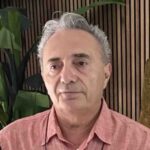D Anusca (Craiova, Roumanie)
Introduction
Kyste hydatique = Infection hépatique, pulmonaire, cérébrale, musculaire, rarement osseuse avec Taenia Echinococus granulosus.
Le parasite, petit cestode, 3-6 mm, avec 400-800 ovules, développé chez : chien, chat, loup et renard. L’homme est un hôte intermédiaire.
Maladie = problème mondial de santé publique, courant au Méditerranée orientale, au Moyen-Orient, et Afrique subsaharienne, Chine et les pays de l’ex-Union soviétique.
Matériel et méthode
Homme de 31 ans présentant : douleurs rétro-calcanéennes, signes celsiennes mineurs, sans troubles neurologiques or vasculaires.
Paraclinique : ALT, AST ↑, radiographie, CT et IRM ont montré le kyste, avec ces multiples géodes (7,3/5,4 cm, 80% de calcanéum). La biopsie et l’examen histopathologique certifient le diagnostic.
L’intervention – exérèse du kyste et de sa membrane, lavage antiseptiques, formaldéhyde liquide, comblement osseux avec greffe autologue (crête iliaque) précède du traitement spécifique antiparasitaire = ALDAZOL 800mg/jour, 30 jours.
Postopératoire – récurrence de l’infection parasitaire avec fistule a 30 jours.
Réintervention chirurgicale = extraction de la greffe, lavage et scellement du défaut avec des perles de phosphate de calcium avec Vancomycine + Gentamicine et traitement antibiotique Ciprinol 1,5 g/jour + Colistine 8MUI/jour, 15 jours. Évolution favorable avec la guérison.
Discussion
La guérison signifie traitement antiparasitaire, chirurgical, antibiotique et du biomatériel comblé avec antibiotique.
Conclusion
L’hydatidose osseuse est une affection médicale rare qui ne met pas la vie en danger, mais le traitement est complexe et coûteux.
Introduction
Hydatid cyst = Hepatic, pulmonary, cerebral, muscular, rarely bone infection with Taenia Echinococus granulosus.
Parasite, small cestode, 3-6 mm, with 400-800 ova, developed in the following hosts: dog, cat, wolf and fox. Man is an intermediate host.
Disease = worldwide public health problem, common in the Eastern Mediterranean, Middle East, sub-Saharan Africa, China, and countries of the former Soviet Union.
Matherial and methodes
A 31-year-old man with: right retrocalcaneum pain, minor cardinal signs, without neurological or vascular disorders.
Paraclinically: ALT, AST ↑, X-ray, CT-scan and MRI showed the cystic formation, with multiple geodes occupying 80% of the calcaneus (7.3/5.4cm). Biopsy and histopathological examination certify the diagnosis.
The surgical intervention consisted in complete excision of the cyst and its membrane, washing with antiseptic substances and formaldehyde, filling the bone defect with autologous graft and specific antiparasitic treatment = ALDAZOL 800mg/day, 30 days.
Postoperative evolution with fistula?! demonstrating recurrence of parasitic infection at 30 days.
Surgical reintervention = extracting the bone graft, washing with antiseptic substances and sealing the defect with calcium phosphate pearls with Vancomycin+Gentamicin and antibiotic treatment Ciprinol 1.5g/day + Colistin 8MUI/day, 15 days. Favorable evolution, the patient resuming normal life.
Discussion
Permanent healing = anti-parasitic, surgical, antibiotic treatment and antibiotic-impregnated biomaterials.
Conclusions
Hydatid bone disease = rare medical condition that doesn`t endanger life, but the treatment scheme is complex and expensive.


